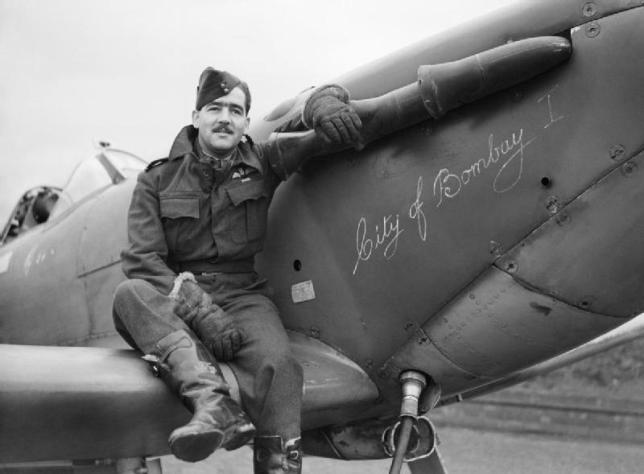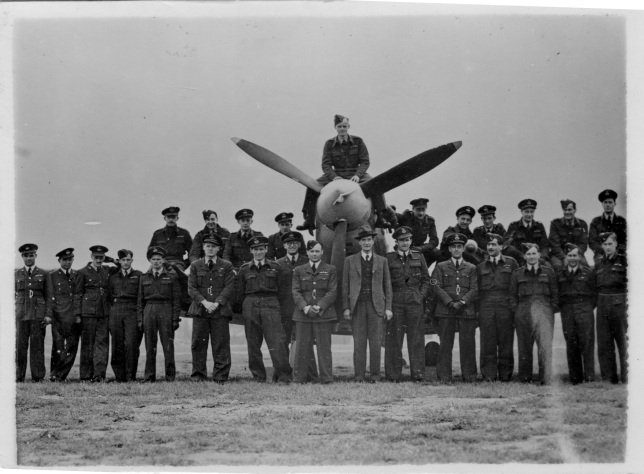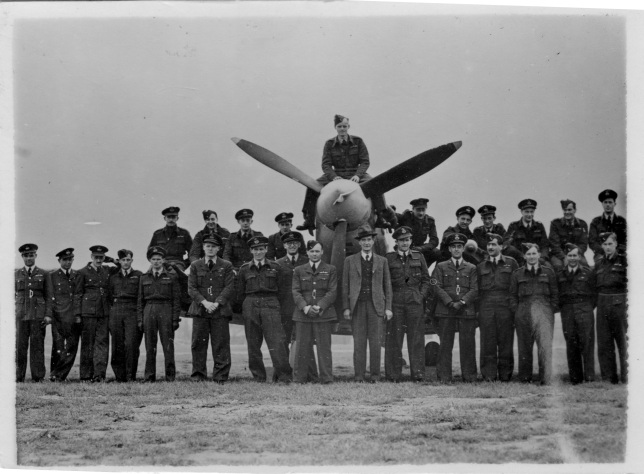I had someone commented this morning.
Hello Ann, a lot of time has passed since you posted on this site. But I am conducting research in preparation for a book that would concern your father and his wartime experiences. I would very much like to make contact if possible. Perhaps you could reply on this site if you are open to hearing more? I hope to hear from you.
Herbert James Lempriere “Jim” Hallowes was born in Lambeth, London in April 1912, he joined the in January 1929 at Halton. In 1934 he applied for pilot training and after completing his training he was posted to 43 Squadron in April 1936. During the Battle of Britain he was credited with a number of enemy aircraft as destroyed or damaged. He was awarded the DFM for service with 43 Squadron (Gazetted on 6th September), the citation reads.. “In June 1940, Sgt Hallowes was attacking an enemy aircraft over Northern France, when he was himself attacked. His engine being disabled, he proceeded to glide back to friendly territory but was again attacked when about to abandon his aircraft by parachute. He dropped back into his seat and as the enemy aircraft passed he delivered such an effective burst of fire as to destroy his opponent. He then made a successful parachute landing.” He was injured in the incident and spent a short period in hospital but returned to 43 Squadron when recovered.
He was also awarded the Bar to the DFM for service with 43 Squadron during the Battle of Britain (Gazetted on 6th September 1940), the citation reads..”Since the commencement of hostilities this airman has personally destroyed twenty-one enemy aircraft. He has set a fine example of bravery and resolute bearing on many occasions.”
He received his commission to the rank of P/O on probation on 29th November 1940 (with seniority backdated to 18th September 1940). After a brief spell with 96 Squadron in December 1940 he returned to 43 Squadron. He was posted to 122 Squadron in 1942 and later commanded 222 and 165 Squadrons later that year and awarded the DFC (Gazetted on 19th January 1943), the citation reads.. “S/Ldr Hallowes is an outstanding and relentless fighter. He has destroyed 19 and damaged other enemy aircraft. His high skill and unswerving devotion to duty have set an example in keeping with the highest traditions of the RAF.” Before the end of the War he commanded 504 Squadron and survived the War. He remained in the RAF and transferred to the Secretarial Branch until he retired in July 1956 having risen to S/Ldr (retaining the rank of W/Co). Jim Hallowes died in October 1987.




